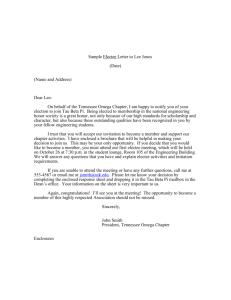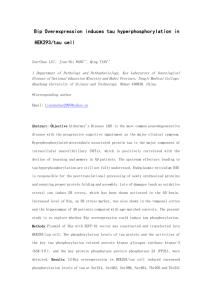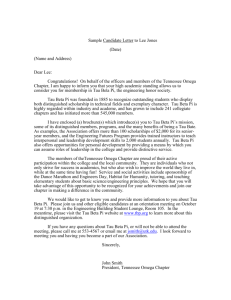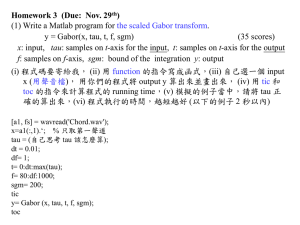Combination of event-related potentials and cerebrospinal fluid
advertisement
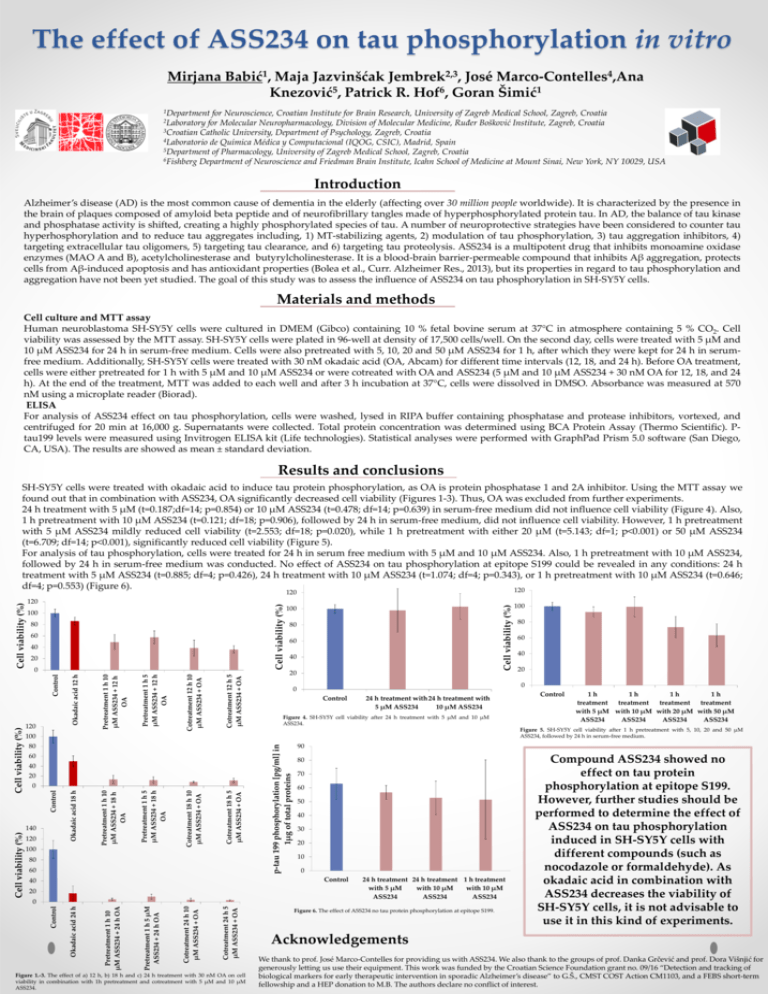
The effect of ASS234 on tau phosphorylation in vitro Mirjana Babić1, Maja Jazvinšćak Jembrek2,3, José Marco-Contelles4,Ana Knezović5, Patrick R. Hof6, Goran Šimić1 1Department for Neuroscience, Croatian Institute for Brain Research, University of Zagreb Medical School, Zagreb, Croatia 2Laboratory for Molecular Neuropharmacology, Division of Molecular Medicine, Ruđer Bošković Institute, Zagreb, Croatia 3Croatian Catholic University, Department of Psychology, Zagreb, Croatia 4Laboratorio de Química Médica y Computacional (IQOG, CSIC), Madrid, Spain 5Department of Pharmacology, University of Zagreb Medical School, Zagreb, Croatia 6Fishberg Department of Neuroscience and Friedman Brain Institute, Icahn School of Medicine at Mount Sinai, New York, NY 10029, USA Introduction Alzheimer’s disease (AD) is the most common cause of dementia in the elderly (affecting over 30 million people worldwide). It is characterized by the presence in the brain of plaques composed of amyloid beta peptide and of neurofibrillary tangles made of hyperphosphorylated protein tau. In AD, the balance of tau kinase and phosphatase activity is shifted, creating a highly phosphorylated species of tau. A number of neuroprotective strategies have been considered to counter tau hyperhosphorylation and to reduce tau aggregates including, 1) MT-stabilizing agents, 2) modulation of tau phosphorylation, 3) tau aggregation inhibitors, 4) targeting extracellular tau oligomers, 5) targeting tau clearance, and 6) targeting tau proteolysis. ASS234 is a multipotent drug that inhibits monoamine oxidase enzymes (MAO A and B), acetylcholinesterase and butyrylcholinesterase. It is a blood-brain barrier-permeable compound that inhibits Aβ aggregation, protects cells from Aβ-induced apoptosis and has antioxidant properties (Bolea et al., Curr. Alzheimer Res., 2013), but its properties in regard to tau phosphorylation and aggregation have not been yet studied. The goal of this study was to assess the influence of ASS234 on tau phosphorylation in SH-SY5Y cells. Materials and methods Cell culture and MTT assay Human neuroblastoma SH-SY5Y cells were cultured in DMEM (Gibco) containing 10 % fetal bovine serum at 37°C in atmosphere containing 5 % CO2. Cell viability was assessed by the MTT assay. SH-SY5Y cells were plated in 96-well at density of 17,500 cells/well. On the second day, cells were treated with 5 µM and 10 µM ASS234 for 24 h in serum-free medium. Cells were also pretreated with 5, 10, 20 and 50 µM ASS234 for 1 h, after which they were kept for 24 h in serumfree medium. Additionally, SH-SY5Y cells were treated with 30 nM okadaic acid (OA, Abcam) for different time intervals (12, 18, and 24 h). Before OA treatment, cells were either pretreated for 1 h with 5 µM and 10 µM ASS234 or were cotreated with OA and ASS234 (5 µM and 10 µM ASS234 + 30 nM OA for 12, 18, and 24 h). At the end of the treatment, MTT was added to each well and after 3 h incubation at 37°C, cells were dissolved in DMSO. Absorbance was measured at 570 nM using a microplate reader (Biorad). ELISA For analysis of ASS234 effect on tau phosphorylation, cells were washed, lysed in RIPA buffer containing phosphatase and protease inhibitors, vortexed, and centrifuged for 20 min at 16,000 g. Supernatants were collected. Total protein concentration was determined using BCA Protein Assay (Thermo Scientific). Ptau199 levels were measured using Invitrogen ELISA kit (Life technologies). Statistical analyses were performed with GraphPad Prism 5.0 software (San Diego, CA, USA). The results are showed as mean ± standard deviation. Results and conclusions SH-SY5Y cells were treated with okadaic acid to induce tau protein phosphorylation, as OA is protein phosphatase 1 and 2A inhibitor. Using the MTT assay we found out that in combination with ASS234, OA significantly decreased cell viability (Figures 1-3). Thus, OA was excluded from further experiments. 24 h treatment with 5 µM (t=0.187;df=14; p=0.854) or 10 µM ASS234 (t=0.478; df=14; p=0.639) in serum-free medium did not influence cell viability (Figure 4). Also, 1 h pretreatment with 10 µM ASS234 (t=0.121; df=18; p=0.906), followed by 24 h in serum-free medium, did not influence cell viability. However, 1 h pretreatment with 5 µM ASS234 mildly reduced cell viability (t=2.553; df=18; p=0.020), while 1 h pretreatment with either 20 µM (t=5.143; df=1; p<0.001) or 50 µM ASS234 (t=6.709; df=14; p<0.001), significantly reduced cell viability (Figure 5). For analysis of tau phosphorylation, cells were treated for 24 h in serum free medium with 5 µM and 10 µM ASS234. Also, 1 h pretreatment with 10 µM ASS234, followed by 24 h in serum-free medium was conducted. No effect of ASS234 on tau phosphorylation at epitope S199 could be revealed in any conditions: 24 h treatment with 5 µM ASS234 (t=0.885; df=4; p=0.426), 24 h treatment with 10 µM ASS234 (t=1.074; df=4; p=0.343), or 1 h pretreatment with 10 µM ASS234 (t=0.646; df=4; p=0.553) (Figure 6). 120 100 80 60 40 20 Cotreatment 12 h 5 µM ASS234 + OA Cotreatment 12 h 10 µM ASS234 + OA Pretreatment 1 h 5 µM ASS234 + 12 h OA Pretreatment 1 h 10 µM ASS234 + 12 h OA 80 60 40 20 60 40 20 100 Cotreatment 18 h 5 µM ASS234 + OA Cotreatment 18 h 10 µM ASS234 + OA Pretreatment 1 h 5 µM ASS234 + 18 h OA Pretreatment 1 h 10 µM ASS234 + 18 h OA 120 Okadaic acid 18 h 0 80 60 Control 24 h treatment with 24 h treatment with 5 µM ASS234 10 µM ASS234 Figure 4. SH-SY5Y cell viability after 24 h treatment with 5 µM and 10 µM ASS234. 20 Cotreatment 24 h 5 µM ASS234 + OA Cotreatment 24 h 10 µM ASS234 + OA Pretreatment 1 h 5 µM ASS234 + 24 h OA Pretreatment 1 h 10 µM ASS234 + 24 h OA Okadaic acid 24 h Control 0 Figure 1.-3. The effect of a) 12 h, b) 18 h and c) 24 h treatment with 30 nM OA on cell viability in combination with 1h pretreatment and cotreatment with 5 µM and 10 µM ASS234. 80 60 40 20 Control 1h 1h 1h 1h treatment treatment treatment treatment with 5 µM with 10 µM with 20 µM with 50 µM ASS234 ASS234 ASS234 ASS234 Figure 5. SH-SY5Y cell viability after 1 h pretreatment with 5, 10, 20 and 50 µM ASS234, followed by 24 h in serum-free medium. 90 80 70 60 50 40 30 20 10 0 Control 40 100 0 0 p-tau 199 phosphorylation [pg/ml] in 1µg of total proteins 80 140 Cell viability (%) 100 100 Control Cell viability (%) 120 Okadaic acid 12 h 0 Cell viability (%) Cell viability (%) 120 Control Cell viability (%) 120 24 h treatment 24 h treatment 1 h treatment with 5 µM with 10 µM with 10 µM ASS234 ASS234 ASS234 Figure 6. The effect of ASS234 no tau protein phosphorylation at epitope S199. Compound ASS234 showed no effect on tau protein phosphorylation at epitope S199. However, further studies should be performed to determine the effect of ASS234 on tau phosphorylation induced in SH-SY5Y cells with different compounds (such as nocodazole or formaldehyde). As okadaic acid in combination with ASS234 decreases the viability of SH-SY5Y cells, it is not advisable to use it in this kind of experiments. Acknowledgements We thank to prof. José Marco-Contelles for providing us with ASS234. We also thank to the groups of prof. Danka Grčević and prof. Dora Višnjić for generously letting us use their equipment. This work was funded by the Croatian Science Foundation grant no. 09/16 “Detection and tracking of biological markers for early therapeutic intervention in sporadic Alzheimer’s disease” to G.Š., CMST COST Action CM1103, and a FEBS short-term fellowship and a HEP donation to M.B. The authors declare no conflict of interest.


